Simulation Standard
Silvaco面向半导体工艺和器件仿真工程师推出的技术刊物
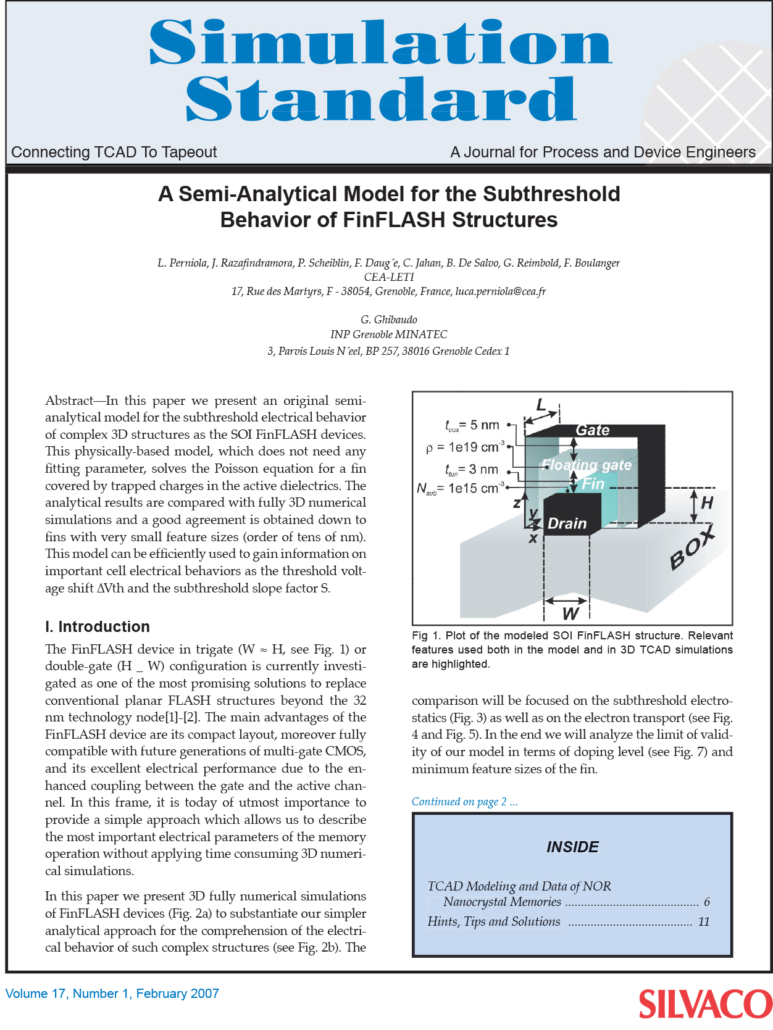
A Semi-Analytical Model for the Subthreshold Behavior of FinFLASH Structures
Abstract
In this paper we present an original semi-analytical model for the subthreshold electrical behavior of complex 3D structures as the SOI FinFLASH devices. This physically-based model, which does not need any fitting parameter, solves the Poisson equation for a fin covered by trapped charges in the active dielectrics. The analytical results are compared with fully 3D numerical simulations and a good agreement is obtained down to fins with very small feature sizes (order of tens of nm). This model can be efficiently used to gain information on important cell electrical behaviors as the threshold voltage shift Vth and the subthreshold slope factor S.
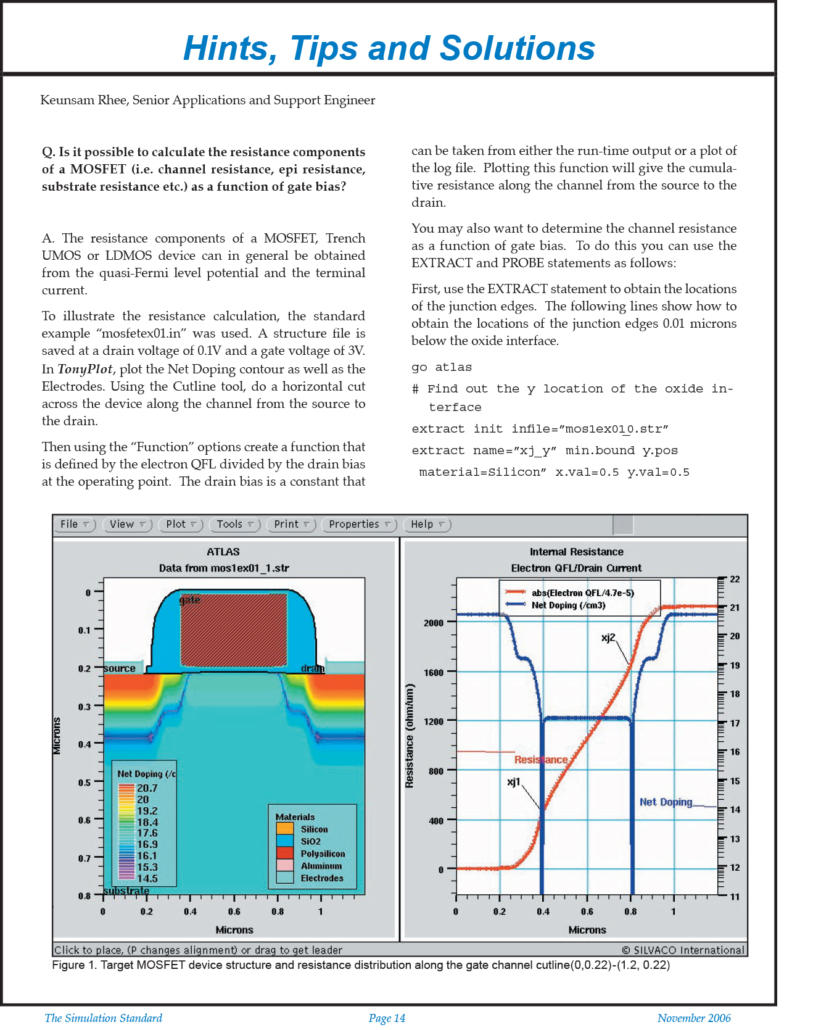
Is it possible to calculate the resistance components of a MOSFET
Q. Is it possible to calculate the resistance components of a MOSFET (i.e. channel resistance, epi resistance, substrate resistance etc.) as a function of gate bias?
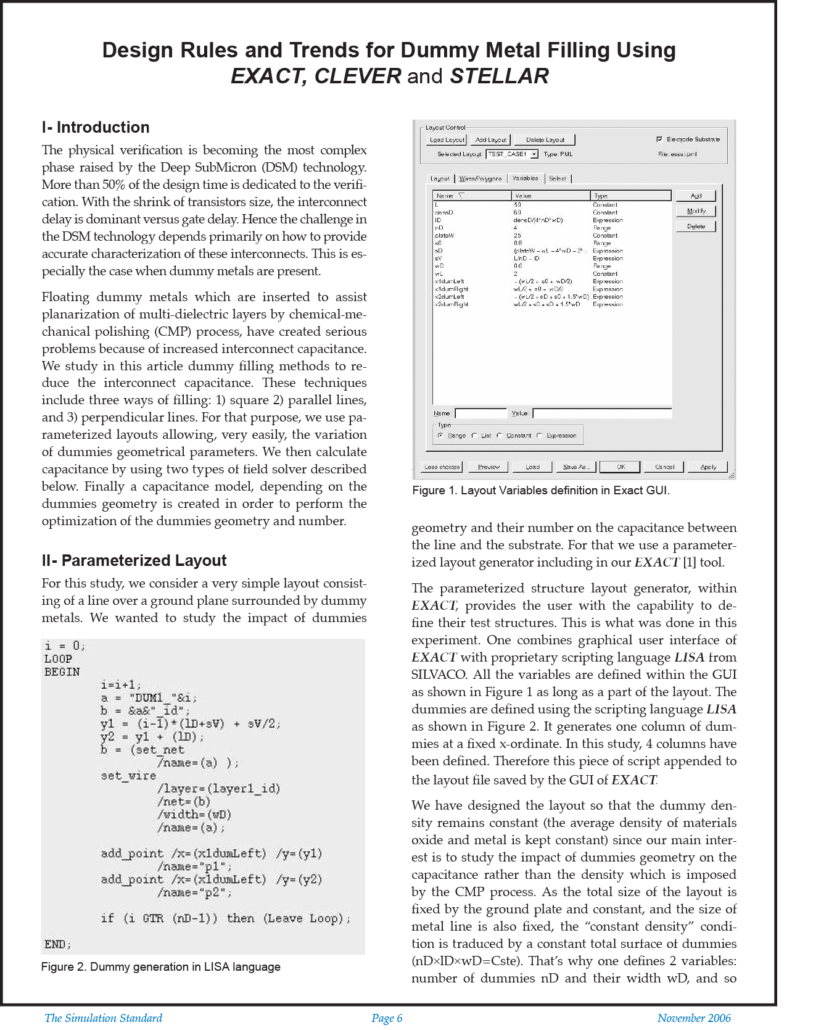
Design Rules and Trends for Dummy Metal Filling Using Exact, Clever and Stellar
Introduction
The physical verification is becoming the most complex phase raised by the Deep SubMicron (DSM) technology. More than 50% of the design time is dedicated to the verification. With the shrink of transistors size, the interconnect delay is dominant versus gate delay. Hence the challenge in the DSM technology depends primarily on how to provide accurate characterization of these interconnects. This is especially the case when dummy metals are present.
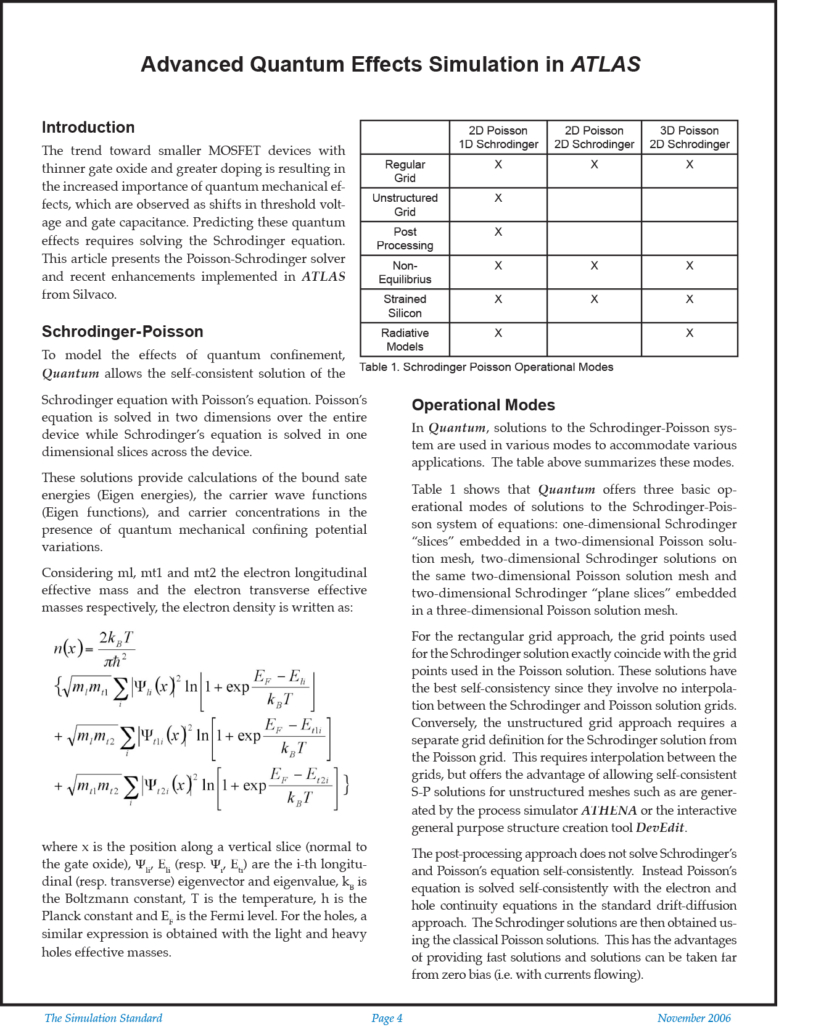
Advanced Quantum Effects Simulation in Atlas
Introduction
The trend toward smaller MOSFET devices with thinner gate oxide and greater doping is resulting in the increased importance of quantum mechanical effects, which are observed as shifts in threshold voltage and gate capacitance. Predicting these quantum effects requires solving the Schrodinger equation. This article presents the Poisson-Schrodinger solver and recent enhancements implemented in ATLAS from Silvaco.
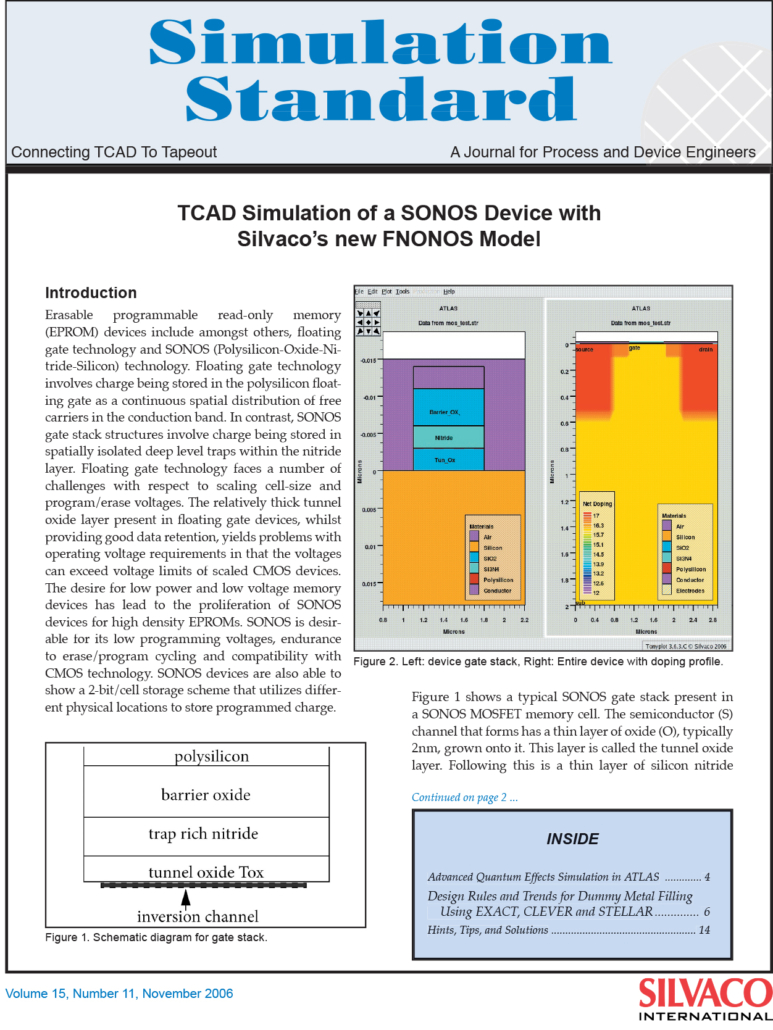
TCAD Simulation of a SONOS Device with Silvaco’s new FNONOS Model
Introduction
Erasable programmable read-only memory (EPROM) devices include amongst others, floating gate technology and SONOS (Polysilicon-Oxide-Nitride-Silicon) technology. Floating gate technology involves charge being stored in the polysilicon floating gate as a continuous spatial distribution of free carriers in the conduction band. In contrast, SONOS gate stack structures involve charge being stored in spatially isolated deep level traps within the nitride layer.
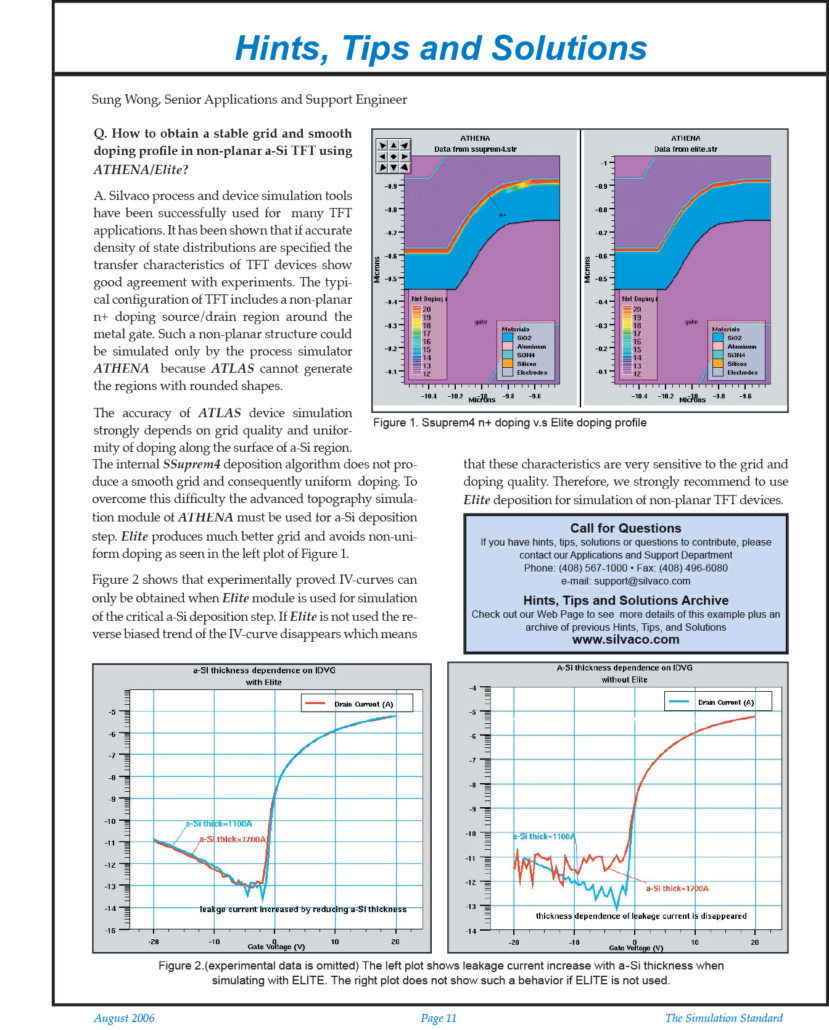
How to obtain a stable grid and smooth doping profile in non-planar a-Si TFT using Athena/Elite?
How to obtain a stable grid and smooth doping profile in non-planar a-Si TFT using Athena/Elite?

